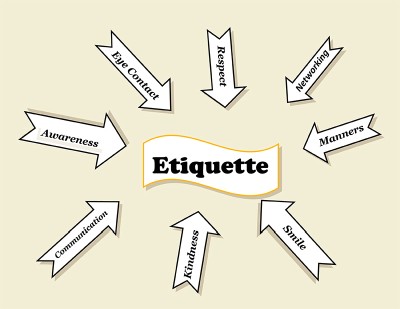Don’t Worry, Be Happy!
January 2016 by Sharon Dillard
 It’s the New Year and what better way to start off the year than by getting happy and improving your life. For years, practiced ways to improve my life and direct it on a simpler path. When the going gets tough, I get going with these trusty practices that always help me refocus on my ultimate goals – being a happier, healthier person.
It’s the New Year and what better way to start off the year than by getting happy and improving your life. For years, practiced ways to improve my life and direct it on a simpler path. When the going gets tough, I get going with these trusty practices that always help me refocus on my ultimate goals – being a happier, healthier person.
Here are a few simple but powerful actions you can take that have certainly helped me over the years.
Exercise more. This has totally changed my life and as a bonus, I look and feel better. You probably already know that exercise is better than tranquilizers for relieving anxiety and stress. Not only does exercise provide its own stress reduction and feelings of well-being, but the sense of well-being actually lasts well beyond the exercise itself.
Sleep more. We have become a nation of sleep-deprived citizens. I find myself less sensitive to negative emotions when I’ve had enough rest. Rest equals recharging your creativity and energy. Getting into bed at 8 p.m. with a great book and turning the light out an hour later, or even just taking a quality nap in the afternoon, can do more for your mood than any number of bubble baths or massages.
Go outside. Whenever I get a chance and the weather is nice I like to eat outside as well as walk. When you’re layered properly, you can enjoy the outdoors in all of its beautiful seasons. There are some fun and healthy outdoor activities available during the rainy or cold months, too. These days, we have even less interaction with nature, but it may be when we need it the most!
Help others. A popular New Year’s resolution is to volunteer, something that can take many forms. Whether you choose to spend time helping out at your local library, mentoring a child, or as big a project as building a house, there are always nonprofit organizations that want and could really use your help. If your time is in short supply, why not just clean out your clutter? Donate your old furniture, clothing, and other household items you no longer need, rather than leaving them in basements and attics to collect dust, or out by the curb to fill up our landfills.
Practice smiling. Fake it until you make it! Life is always going to have its low points, but being able to laugh them off and not take things too seriously always helps lighten the mood.
Move closer to work. Even though I live in the mountains, I’m only 17 minutes away from my office. Knowing at the end of a hard day that I have only a short distance to go is comforting. Plus I save the stress of being in traffic, wear and tear on my vehicle, and have more time to do the things I enjoy – like ride my horse, or take a walk in nature.
Spend time with family and friends – don’t regret it on your deathbed. Getting the family together can sometimes be hectic but after it’s all said and done, it’s all worth getting together. I still have friends from my childhood as well as high school, these good friends are hard to find. Pick up the phone for a simple conversation or say, “I’m in town, let’s have lunch.” This gets you out of yourself and into someone else’s world.
Practice gratitude. When was the last time you said “thank you” with all your heart? Sometimes I forget that I have so much to be grateful for. A true attitude of gratitude is a key to success in any part of our lives. Listing daily all that I’m grateful for keeps me in a positive state of gratitude.
Meditation. My last step to improve happiness in my life is meditation – or clearing your mind and calming yourself down. For 30 minutes each day, I slow down to think, plan, and visualize. I have become aware of my biggest opportunities, smartest activities, and greatest tactics for growth. With this amount of insight and clarity, I can take actions that will drive excellent results. Really commit to making it your breakthrough year and know you’ll have to slow down for a bit each day to accomplish this. Then you’ll be perfectly prepared to speed up and win.
These practices have improved both my personal and professional lives, and help me become happier and healthier every day – even on the bad days. Let them do the same for you. Just sayin’.
Published: New Mexico Apartment News Magazine – Jan/Feb issue 2016
Sharon Dillard is the award-winning CEO of Get A Grip Inc., a national franchise kitchen and bathroom resurfacing company based in Albuquerque, New Mexico.

Taking Time at the Holidays
November 2015 by Sharon Dillard
 When you run a business, the holidays are both a time of joy and a time of stress. Instead of much-needed time to turn off work and enjoy our families, we owners, managers and supervisors feel guilty or stressed for not getting anything done. If we do keep working, we feel guilty for not spending more time with family.
When you run a business, the holidays are both a time of joy and a time of stress. Instead of much-needed time to turn off work and enjoy our families, we owners, managers and supervisors feel guilty or stressed for not getting anything done. If we do keep working, we feel guilty for not spending more time with family.
For me, the holidays are time to slow down, keep it simple, and enjoy family and friends. That includes our work family – our coworkers, suppliers, vendors and accounts. We use the time between Thanksgiving and the New Year to visit the people and other businesses that have helped us have a great year – to show them how grateful we are for their patronage. And we throw our own parties, both in the office and with friends and family.
Here are some ways I’ve discovered to make the holidays less stressful, but still feel like we’ve accomplished our business goals.
Organize. Since you know that you won’t be “working” the way you would during a normal work week or month, plan your tasks and projects accordingly. Make to-do lists: one for the important things that you need to get done before the break and another for what you need to work on after the break.
Communicate your schedule and expectations. Talk with your family and coworkers before the holiday and find out how much time you and they would like to take off. Work your way towards a compromise that you are both happy with. This puts a plan in place for everyone, and more importantly, everyone has helped create the plan. That means less guilt for everyone, too.
Schedule work and play. Getting some work done is great, but do make time to step away. Schedule a time for socializing, both in the office and out. For us, this means taking entire days out of the office and visiting accounts with a small token of our appreciation for the past year’s patronage. Scheduling these activities means you can spend time working or with your family without feeling stressed-out, since you know that this was planned.
Don’t overbook yourself. Make sure you end up with work and social activities that are manageable and that you can deliver on. The last thing you want is disappointment. This includes allowing enough time to account for other people being on vacation, and for your own for sleep, exercise, and relaxation.
Known the consequences of NOT taking time off. For many of us, taking time away feels like a luxury. Some 25 percent of US workers don’t take any vacation at all. But working too much makes us stupider, according to the American Journal of Epidemiology, depressed, a study in the UK, and actually hurts our chances for a promotion or better job. That’s according to a study by Ernst & Young that found a positive relationship between fewer hours overall and performance. For each additional ten hours away from the office employees took, their performance reviews were eight percent higher the following year!
Try these tips to give yourself permission to enjoy the holidays this year. Rather than feeling like you got off track because you were enjoying the good cheer of the season, you simply continue the momentum you had already begun. And as a result you’ll have fun without guilt, because you’ve set it up so your business is flowing right along. And you can show your clients appreciation – a great opportunity!
So rethink “work” this holiday season, because it is a great time to re-prioritize, remembering that family and friends are life’s true gifts. After all, on their deathbeds, no one ever said say “I wish I had spent more time at work.” Just sayin’.
Published: New Mexico Apartment News Magazine – Nov/Dec issue 2015
Sharon Dillard is the award-winning CEO of Get A Grip Inc., a national franchise kitchen and bathroom resurfacing company based in Albuquerque, New Mexico.

Review the Past, Plan for the Future
September 2015 by Sharon Dillard
 For many of us, especially those with children, the fall can be the true start of the year. With cooler weather and less pressure than at the beginning of the year, it can be easier to feel energized and invigorated than in January. That’s why I often review and revise my calendar year goals, as well as set a few new ones in the fall. I’ve found it really helps when you have some momentum going into the coming New Year. That way you aren’t starting out the New Year in the same spot and with the same ambitions as last year.
For many of us, especially those with children, the fall can be the true start of the year. With cooler weather and less pressure than at the beginning of the year, it can be easier to feel energized and invigorated than in January. That’s why I often review and revise my calendar year goals, as well as set a few new ones in the fall. I’ve found it really helps when you have some momentum going into the coming New Year. That way you aren’t starting out the New Year in the same spot and with the same ambitions as last year.
The fall also tends to be a little calmer than when things start to go crazy for the holidays. Here are some ideas to help you get a firm base set and get things in order for the rest of the year so you don’t feel overwhelmed when the craziness of the end of the year hits.
Figure out what drives you. If you want the biggest leg up in your career and life, the best thing you can do is figure out what drives you. Are you a people person but stuck in a job that requires lots of alone time? Maybe that’s why your work goals seem so daunting and like such a big undertaking. Figuring out what drives you means knowing what really matters to you, what motivates you, and what makes you exceptional. Set goals that allow you to use this internal motivation and you’ll be amazed at how much you can get done.
Uncover your strengths & skills. These are your talents, skills, and abilities – the things that people praise you and seek your guidance for. Knowing what you are best at allows you to take advantage of opportunities; most of the time these strengths and skills are the things we love to do or just what we are naturally good at. If your goals aren’t aligned with your strengths and skills, think about slowly shifting them towards what you really thrive at. This will make it much easier to achieve them.
Define your values & principles. Your strengths address the question of “what?” Your values and principles answer the questions “how?” These underlying beliefs steer everything you do and help define who you are or want to be. Living your life in harmony with your values and principles makes reaching goals much easier. If you don’t value money, then reaching a sales goal probably won’t be easy. But if helping people is an underlying belief, then a goal of having 100% customer satisfaction could really get you moving.
Review the year so far. You can’t know where you want to go without looking at where you’ve been. As you think back on the year so far and the goals you set in January, what were your big victories? What slowed you down? What would you have done differently if you had to do it over again? Is there anything you left unresolved or unfinished? Taking the time to review these simple questions can make a huge difference in setting the tone for the rest of your year.
Set 3 top work-related goals. What are my top three work-related goals for the remainder of the year? Why are those goals important to me? What habits and processes do I need to adopt to support those goals? Being happy with your work life can lead to happiness outside it, too.
Set 3 top personal goals. What are my top three personal goals for the remainder of the year? Why are those goals important to me? Who can I share those goals with to help hold me accountable? No matter how great your work life is, you can never be truly happy if you’re not satisfied with your personal life. Make sure that the goals of both of these parts of your life complement one another; conflicting goals often lead to little or no progress at all.
The fall is a great time for reflection on how the year has gone so far. It’s also a great time to make preliminary goals for the coming year and address your course for the rest of the year to help put you in a good place to reach those goals. Are you making forward progress on all the great things you set out to accomplish? How will you make the most of the rest of this year? I’ll be sitting down with my 2015 goals this month, reflecting and revising based on how the year has gone, and making plans for 2016. Set yourself up to have a great start in the coming year and you’ll be much more likely to keep moving forward toward all your goals. Just sayin’.
Published: New Mexico Apartment News Magazine – Sept/Oct issue 2015
Sharon Dillard is the award-winning CEO of Get A Grip Inc., a national franchise kitchen and bathroom resurfacing company based in Albuquerque, New Mexico.

Hiring the Right People
July 2015 by Sharon Dillard
 Finding and hiring the right people is easier said than done, but it’s an important part of owning a small business. Training and processing new employees is expensive, so managing turnover and improving employee retention is an excellent way to keep tabs on your bottom line. That starts with getting the right people in the right positions in the first place.
Finding and hiring the right people is easier said than done, but it’s an important part of owning a small business. Training and processing new employees is expensive, so managing turnover and improving employee retention is an excellent way to keep tabs on your bottom line. That starts with getting the right people in the right positions in the first place.
Here are some ideas for finding and hiring the right people the first time.
Write better job descriptions. Less is better: try to describe on the core essence of your open position – job duties, qualifications and requirements. Focus on the biggest priority tasks for a position and save the details for the interview. Remove the obvious, focus on the unique – everyone wants salespeople with killer instincts, but focus on the unique skills you want them to demonstrate.
Hire for your culture. When hiring new employees, you need to find individuals that fit your culture and will be passionate about building a loyal client base. Culture’s all that invisible stuff that glues organizations together. It includes things like everyone agreeing on the purpose, values, and approach to serving the customer. This is hard to explain, hard to measure, and hard to manage.
Ask for employee referrals. One of the best ways to find people who fit your culture is to ask your current staff for referrals. If you already have a few high performers on staff, they might have friends or acquaintances that would be a good fit for your company. This has worked out the best for us.
Get input from your team and take your time with the interview process. When you do identify a candidate who looks promising, have them meet a lot of people within your company. To hire somebody on one interview is crazy. Vet people and gauge their interest by bringing them in to meet several staff – and not just the people they’ll be working with and for. You’ll get different opinions to help you make the best decision.
Go with your intuition. This might sound like a no-brainer but when you’re faced with the opportunity to hire some a person with a great resume and experience, it can be easy to dismiss the little voice inside your head that says you just don’t like him. You’ll be spending a lot of time with the people on your team. If something about their personality drives you crazy, think twice about hiring them.
Look for flexible applicants. Hiring an employee that’s committed to working hard doesn’t just mean finding someone that will stay late, come early or send emails on the weekend just to impress you. It means finding someone that is able to focus on the building blocks, getting simple but often boring fundamentals of business right. And someone who will pitch in no matter the situation – even when it’s not technically in their job description.
Will they learn? Paying more attention to candidates’ ability to learn than previous experience demonstrates more than their resume. Can a potential employee tell you how they dealt with difficult customers at their waitressing job? What about the one who grew from laborer to foreman because he paid attention to what the customer wanted and delivered? When a candidate can tell you what she got out of the job rather than just listing her responsibilities, she’s more qualified that someone who has done the job before.
Finding the best employees for your company takes some time. To build the team that you want, take a step back from resumes and candidates’ pre-determined interview responses to look for individuals that will fit your company culture and are eager to learn new tasks. Just sayin.
Sharon Dillard is the award-winning CEO of Get A Grip Inc., a national franchise kitchen and bathroom resurfacing company based in Albuquerque, New Mexico.

Change Something
May 2015 by Sharon Dillard
 Fashion. The times. The weather. All things that change. What about your ideas? What about your business? How long has it been since something changed in your life or company? Because if your life or business becomes stale, without fresh ideas and thoughts, or a new outlook on customer service, employee satisfaction and retention, you get stuck in a rut that prevents you from making progress. And if your business won’t be around for long without the ability to embrace change and implement new ideas.
Fashion. The times. The weather. All things that change. What about your ideas? What about your business? How long has it been since something changed in your life or company? Because if your life or business becomes stale, without fresh ideas and thoughts, or a new outlook on customer service, employee satisfaction and retention, you get stuck in a rut that prevents you from making progress. And if your business won’t be around for long without the ability to embrace change and implement new ideas.
Many people are resistant to change. But not because they don’t like new ideas. Maybe they don’t completely understand how it works or how it will help. Why do we need a new website when the old one is “fine?” Why do our cars need a new image wrapped on them when everyone likes the old ones?
Just like our clothes, sometimes our branding simply wears out. The logo looks dated. The messaging starts to wear thin. So like our clothing, we change our marketing – both tactics and branding so that we don’t become stale.
The same thing applies to your life. That’s why people take vacations – to get out of their ordinary routine and see new things. With luck, those new things, experiences and ideas will translate into their non-vacation existence.
Here are some ideas for keeping your ideas fresh, both in life and business:
- Embrace new technology. Learning to use a new technology is a great way to refresh your own thinking. If you remember when putting together a flyer for business involved scissors and glue, I certainly hope you’ve discovered how easy computers and programs like Photoshop make creating new materials. If you don’t, you’re probably already using the latest, greatest apps!
- Ask your customers. Ever ask your customers what they think of you? What you could do better? What they’d like next? Asking a customer’s opinion is one of the easiest and most rewarding ways to get new ideas and refresh your old ways of thinking.
- Ask your employees. The people who talk with your customers every day probably have some thoughts. Why not take advantage of their ideas and concerns. After all, they are on the front lines of your company’s efforts every day. Use them!
- Reward people. If your customer or employee has a new, innovative and interesting idea, reward them. Everyone likes to feel valued, and a gift card or catered lunch goes a long way to keeping employees and customers engaged.
- Don’t complain (for a day, week, month). Want to see someone else’s point of view? Don’t complain about anything. In fact, consciously try to see the positive in everything. Even if you’re a highly positive person, it’s difficult not to utter one negative sentence for even 24 hours. This one is also great practice for becoming conscious of your thoughts.
- Take a different route to work or climb the stairs. This is a great challenge to keep alert, discover new places, get a better understanding of your city and to have more fun while doing one of the mundane daily tasks of life.
- Learn something new. If you want to learn how to cook you need to practice, practice, practice. Forcing yourself to try a new recipe each day is a great way to learn of more techniques and ingredients. Always wanted to know everything about customer service? Being an entrepreneur? How tennis balls are made? Educate yourself without school! Pick a topic, visit your library, or call an expert and ask!
Change can be hard, but often, it is rewarding. Even fun. That’s why people come back from vacation with new energy. In business, change can be even harder, as we’re often reluctant to mix up the status quo. Why change something if the old thing has been working? But is it really? Or have you become complacent and self-satisfied with how things are. Who knows, maybe that new idea could catapult your business to whole other level! Just sayin’.
Published: New Mexico Apartment News Magazine – May/June issue 2015
Sharon Dillard is the award-winning CEO of Get A Grip Inc., a national franchise kitchen and bathroom resurfacing company based in Albuquerque, New Mexico.

Measure and Monitor
March 2015 by Sharon Dillard
 The beginning of the year is a time to look to the past and decide what one wants in the future. Many business people do that in January, but I prefer to do it in the spring, when a feeling of renewal after the long winter brings excitement for the future. So I ask myself, what am I willing to do, and how am I going to reach my goals?
The beginning of the year is a time to look to the past and decide what one wants in the future. Many business people do that in January, but I prefer to do it in the spring, when a feeling of renewal after the long winter brings excitement for the future. So I ask myself, what am I willing to do, and how am I going to reach my goals?
Measuring and monitoring are critical, necessary tools you need in order to reach your goals. Any planning we’ve done previously won’t have a chance of succeeding if we can’t judge know how far we’ve come, or how far we have to go. If we don’t know where our ideal end point is, we can’t know which road will take us there. On the other hand, when we do know where to go, we can set up milestones and monitor our progress along the path. Here’s a different way to think about it:
We measure, we achieve. A simple system that is actually implemented is better than a complex one that is unused, right? So don’t think you need some complex computer based contact management software to track appointments, numbers of leads called or proposals sent. Use whatever tools get the job done. There are very successful business people who get great results using an Excel spreadsheet, or even plain index cards.
Pick measurable items. What all should you be measuring and monitoring? Some examples from the sales world include numbers of sales meetings you have; the kinds of meetings they were (first time, follow up visits, etc.); the number of leads and /or prospects in your sales pipeline; the number of proposals you send/estimates you write; number of proposals/estimates that turn into paying clients; the value of the clients; as well as the locations and kinds of clients they are.
If customer service improvement is your goal, you could measure and monitor the length of customer calls, ask your customer what they think about your service via an electronic survey or by contacting them via letter or on the telephone, set up a customer service training program for front line employees – those who have immediate contact with customers.
The point is to measure and monitor the data that is most meaningful to your business. For some businesses, it’s the number of widgets made. For others it’s the dollar amount of each sale. For still others, it’s how long a customer stays with you.
Make it a point to actually review your data. You’ve got some data, but are you hitting your targets? When you look at a month, quarter or year, what does it tell you compared to prior time periods? Are there areas you’ve neglected? Or has one of your target items exploded such that you’re barely keeping up? That’s a good problem to have.
Adjust your targets accordingly. Now that you know how well you’re doing compared to your goals, you can adjust your methods to reach them, or adjust your goals if you’re finding they weren’t the most reasonable to begin with.
So ask yourself if and what you’re measuring and monitoring. Are you doing these things now? If not, why not? Is it fear of knowing the answers? Of needing to change the way you do things? Of needing to make hard decisions for the success of your business?
If you are doing well, how could you improve your process to do even better? What would it take to get the discipline you need to really be successful?
Either way, you won’t know if you’ve arrived unless you know where you’re going. Just sayin’.
Published: New Mexico Apartment News Magazine – March/April issue 2015
Sharon Dillard is the award-winning CEO of Get A Grip Inc., a national franchise kitchen and bathroom resurfacing company based in Albuquerque, New Mexico.

Get A Leg Up!
January 2015 by Sharon Dillard
 What are you going to do to make sure that you have the best year ever? What one thing will mean the difference in actually achieving your goals, rather than chalking them up to yet another year’s unfulfilled resolutions? Think about it!
What are you going to do to make sure that you have the best year ever? What one thing will mean the difference in actually achieving your goals, rather than chalking them up to yet another year’s unfulfilled resolutions? Think about it!
Here are a few helpful tips that will help give you a “leg up” for this coming year.
Clean out your closet and donate unwanted clothes to charity. This is one of my favorite New Year activities, and it’s the first thing I do each January to get myself moving in the right direction. Uncover, discover and discard unwanted clutter in your closet so that you can find clarity in your life. Studies have shown that there is a link between physical clutter and psychological clutter; cleaning out your closets, drawers and storage areas actually frees up mental space for new, exciting activities and creative thoughts. Plus, you get the added bonus of giving back to someone who could really benefit from the things you don’t need anymore.
Build values everyday. People do business with people they trust and who make them feel valued. Thus, our values of customer service and providing exceptional products should guide every decision we make and every conversation and interaction we have. This includes our own team members as well as our customers. If we can’t link what we do to one of our values, we should ask ourselves why we’re doing it. It’s that simple.
Expand your thinking with new experiences. Commit to trying something new that you have always considered doing, but haven’t ever had the little extra push to go for it. You could take a class, hike a new trail, volunteer for a cause that you find meaningful, read a book on a subject you’re unfamiliar with, or even research and plan a vacation (you don’t actually have to take the vacation to get the benefit of expanding your thoughts and getting motivated). After you accomplish or even just try something new, take the time to notice how the experience affects your life. Oliver Wendell Holmes Jr. said, “A mind that is stretched by a new experience can never go back to its old dimensions.” Make it a point to leave your comfort zone and experience something new!
Slow down to speed up. It’s easy to stay busy and constantly be moving as fast as you possibly can. But, what’s the point of spending your days climbing a random mountain, only to realize at the end of the year you’ve climbed one that didn’t help you reach your goal? At the beginning and end of each day, try to slow down, think, visualize where you want to go and write it down. You’d be amazed at how much of an impact this small task can make on your overall sense of well-being.
Get a whole new hairstyle or haircut. Can making a small change, such as cutting your hair, really have an impact on your life? Absolutely! Small changes are wonderful ways to get into action and feel good about ourselves. A haircut is one small thing that gives you something to focus on and celebrate – something that will help drastically in keeping you moving forward. A haircut is something you can do right away that demonstrates you have control over your life and what happens to you.
Make a commitment to fitness – physical and mental. Join a class at your fitness club, an exercise group, a sports team, or, if you can afford it, hire a trainer. Not only will you get in shape and lose a little weight, you develop both mental and physical strength. A healthy mind and active body work in unison to make you a more interesting and happier person.
Help create a more meaningful and magical year for yourself with these few simple steps. Pick the one baby-step you think will be easiest, and then add another when you succeed. Getting a leg up on the New Year doesn’t have to be hard. New Year’s resolutions should be things that make you feel better no matter what, even if you don’t follow through. You just have to stay positive and keep trying. With enough effort and patience, everything will work out. Just sayin’…
Sharon Dillard is the award-winning CEO of Get A Grip Inc., a national franchise kitchen and bathroom resurfacing company based in Albuquerque, New Mexico.

Reading: It Does A Business Good
November 2014 by Sharon Dillard
 We’ve all heard the saying that reading is fundamental. Literacy forms the basis of any society, group or even business. We write memos, procedure manuals and even books in the hopes we can convey some meaning and knowledge to another person. Though the days of leafing through a hardbound encyclopedia are long past (sniff, sniff. Thanks, Google!), when we need to know how to fix something, find a resource or even make reservations for a business dinner, we read.
We’ve all heard the saying that reading is fundamental. Literacy forms the basis of any society, group or even business. We write memos, procedure manuals and even books in the hopes we can convey some meaning and knowledge to another person. Though the days of leafing through a hardbound encyclopedia are long past (sniff, sniff. Thanks, Google!), when we need to know how to fix something, find a resource or even make reservations for a business dinner, we read.
Reading opens gateways to new opportunities, especially in business. We read about the promotion of a business colleague, a new company opening up or a lecture we’d like to attend that could impact our business. As we head into the holiday season, consider sharing your favorite business books with friends, colleagues and employees. And consider these reasons why reading is important for anyone looking to open, grow or get a job in a business.
Reading Can Find You A Good Job. Reading job notices, filling out job applications, endless forms for benefits from human resources, finding your way to a meeting via GPS, or reading a map’s legend in an office building are all skills everyone needs in order to find a good job.
Reading Can Keep A Good Job. Many jobs require reading as a part of job performance. And there are reports, memos and emails to write, read, absorb and instructions to implement. Good reading skills open up unlimited doors to contributing to the workplace and moving up the career ladder. Your boss may love your idea to improve the business when you talk about it, but will want to see your idea fleshed out with an action plan – in writing.
Reading Develops The Mind. Thinking skills are like a muscle. The more you use them, the stronger they grow. Comprehending complex ideas is increasingly important in today’s work world – to understand how one’s job and company fits in the marketplace and to change with the times.
Reading Is How We Learn New Things. Books, magazines and even the Internet are great learning tools. They require one to read. And a person who reads is more likely to learn new things in any area they are interested in. Our world abounds with new information, and reading is how we embrace new ideas.
People Who Read Are Creative. The ability to take ideas from one place and apply them to another is a key success factor in business. So read that entrepreneur’s book, that profile of a business leader or thought-leader’s latest article. The creative juices will flow!
Reading Improves Spelling And Grammar. This is especially important in the business world. How can we trust an employee or company to pay attention to the details of our order when they can’t spell or their grammar is atrocious? We may say we don’t judge those with poor grammar and spelling, but really, we do. We assume they are unintelligent, inconsiderate and we don’t want to interact with them professionally.
The Pen Is Mightier Than The Sword. The saying is cliché, but great ideas, written down, have changed the world. By reading about the good ideas and exposing faulty logic, we avert problems and push forward plans that are beneficial.
Words – spoken and written – are the building blocks of business. You’re reading this article because you think I have something important to say. And because I write this regular column, you believe my business is worth your attention and consideration. Which it is, of course. But you may not have heard of me or my business without reading this column. Just sayin’.
Published: New Mexico Apartment News Magazine – Nov/Dec issue 2014
Sharon Dillard is the award-winning CEO of Get A Grip Inc., a national franchise kitchen and bathroom resurfacing company based in Albuquerque, New Mexico.

Manners Matter!
September 2014 by Sharon Dillard
 Etiquette, or the manners you use in social situations including professional workplaces and in business, is the name for the small things that we do on a daily basis that demonstrate our professionalism. Understanding and applying the rules of etiquette ensure that you grow a strong, professional business. This valuable skill set makes you stand out from others, increases your chances of success, and may help you land that dream job or client. Here are some basic etiquette tips that will ensure your professional presence makes the right impression.
Etiquette, or the manners you use in social situations including professional workplaces and in business, is the name for the small things that we do on a daily basis that demonstrate our professionalism. Understanding and applying the rules of etiquette ensure that you grow a strong, professional business. This valuable skill set makes you stand out from others, increases your chances of success, and may help you land that dream job or client. Here are some basic etiquette tips that will ensure your professional presence makes the right impression.
First Impressions Matter: You only get one chance to make a first impression. When meeting a client, make sure you dress professionally regardless of the location.If you’re unsure what professional dress is, ask your supervisor or human resource department. Looking sloppy, messy and dirty will put off your coworkers and can turn away potential clients. Always be sure to smile and shake hands to signal your professionalism, too.
Be On Time, Prepared: Woody Allen said that 80 percent of success is showing up. People who show up on time, act politely and are ready to contribute are rewarded. Doing these things show that they respect their company, coworkers and superiors, and that they take their performance seriously. These individuals will typically earn promotions over their coworkers who are late, unprepared and disrespectful.
Follow Up: This is the flipside of being on time, prepared, and one of the most important aspects of good business etiquette. Following up when you’ve promised to call someone, send a document, deliver a product or answer a question is key. Not doing it shows disrespect. And if you don’t yet know the answer, have the product to deliver or have sent the document, then let the person know. In this case, no news is NOT good news. An apology and a revised timeline is a hundred-times better than no communication at all.
Listen: Interrupting someone when they are speaking is a no-no in any occasion, but it can be the complete end to a business relationship. Make eye contact and give the speaker your full attention to let them know you’re listening. When your turn to speak arrives, be clear, concise, and avoid industry jargon if you feel your audience won’t understand it.
Voice Mail: Always be prepared to leave a message when calling on the telephone. If you get a real person, you’re ahead of the game. If you get their voicemail, speak clearly and slowly, explain why you’re calling, and repeat your name and telephone number, even if you’re sure the person you’re trying to reach already knows who you are.
Email and Online:Virtual communication has taken over the business world, so it is crucial that our manners don’t immediately go out of the window when communicating online. Writing emails and social media posts or comments full of abbreviations and “text-speak” doesn’t cut it when communicating professionally. Instead, treat these occasions exactly as you would a business letter. Use proper grammar and make sure to check your email for correct punctuation, spelling and usage. Typing in all capital letters is the equivalent of yelling, so don’t.
Dining Out: Occasionally, you’ll be called on to have a meal or drinks with potential or current clients. When attend a business function, your best manners will be on display. People with good dining manners often impress their colleagues and counterparts. But people who wipe their hands on their clothes, blow their noses in their napkins, pick their teeth or chew with their mouths open don’t. In fact, poor table manners may lose you business you already had. If you’re unsure how your table manners are, ask a trusted coworker or professional mentor.
Practicing these basic rules of etiquette in mind will soon turn them into habits that you won’t forget. Because good business manners are always welcome, just sayin’
Published: New Mexico Apartment News Magazine – September/October issue 2014
Sharon Dillard is the award-winning CEO of Get A Grip Inc., a national franchise kitchen and bathroom resurfacing company based in Albuquerque, New Mexico.

The Puzzle of Team Building
July 2014 by Sharon Dillard
 Great leadership builds great teams – leaders make decisions (often difficult ones), set high standards and look for ways to improve. Leaders are only as successful as their teams and the great ones know that with the right team dynamics, decisions and diverse personalities, everyone wins in the end. Building great teams is a balancing act between finding the right people, giving them enough direction and freedom to experiment, fail and (hopefully) succeed. Here are some tips I’ve learned along the way to build successful teams that deliver results.
Great leadership builds great teams – leaders make decisions (often difficult ones), set high standards and look for ways to improve. Leaders are only as successful as their teams and the great ones know that with the right team dynamics, decisions and diverse personalities, everyone wins in the end. Building great teams is a balancing act between finding the right people, giving them enough direction and freedom to experiment, fail and (hopefully) succeed. Here are some tips I’ve learned along the way to build successful teams that deliver results.
1. Know Who You Are As a Leader
You may have the best intentions, but if your message isn’t getting across because your leadership style is falling flat, modify your approach. Are you a straight shooter who sometimes steamrolls over others? Some people don’t respond well to that style and need a softer touch. When you know your leadership style, you can evaluate how well it is working with your people, and adapt. Being flexible and open to meeting people where they are. That’s your job as the leader.
2. Know the Team
Your team is a puzzle full of pieces. There are lots of ways to put them together. Each way yields a result, and some ways give better results. When you get to know your team, you get to understand their needs. Knowing your team means investing the time to understand what motivates them, how they think and how to get the best from them. By embracing the different personalities, you get the best from them.
3. Clearly Define Roles & Responsibilities
Everyone on the team needs to understand their roles, responsibilities and how they fit into the larger picture. A maverick salesperson may work best on his or her own with little supervision, while others thrive in a group environment where feedback comes regularly from the group. This is absolutely fine when everyone knows what is expected of them and where they fit in the puzzle. When all the pieces fit, each individual’s unique strengths unite to make the team a powerhouse.
4. Remind the Team of Their Purpose
Constant feedback keeps any team on track. The act of reminding the team of how and what they can be doing better, and receiving feedback from them as to how they could improve the process is important. Don’t wait until a problem occurs to make a course correction. Your team should meet regularly (whatever regularly means to your team) to discuss progress toward its goals. Every team is different, so reminding the team of their purpose and receiving updates from them doesn’t need to be formal or overly structured. A quick check in each day and a team meeting once a week is often just right for some teams. Other teams may need less frequent check-ins. All teams need someone to keep them on track. That’s the leader’s job.
5. Reward the Team
Acknowledgement and reward is a way to honor the work of the team. People love recognition, so take time to give your team the rewards they deserve. Don’t take performance for granted, even if you believe the team is just doing their job. They could be doing the job anywhere, and remain loyal to leaders and companies that they feel respect their skills and effort. Remember to be genuine as you recognize them, though. Bring in lunch during a busy or stressful point in a project, or arrange for a team outing to build camaraderie.
6. Celebrate Success
Celebration at the end of a project or reaching a goal is different from a reward. Celebrations are about reflecting on the process and what your team has done well, as well as what it could improve. By taking the time to remember what allowed you to reach your goal, you celebrate the success of the team (not of the leader) that often demanded tremendous effort.
Successful teams require attention and when your team members feel like they are part something larger than themselves; their collective energy can result in extraordinary results. If your team isn’t delivering, ask yourself why. Are you, as the leader, thinking about these 6 keys? I’m just sayin’.
Published: Apartment News Magazine – July/August issue 2014
Sharon Dillard is the award-winning CEO of Get A Grip Inc., a national franchise kitchen and bathroom resurfacing company based in Albuquerque, New Mexico.














Recent Comments